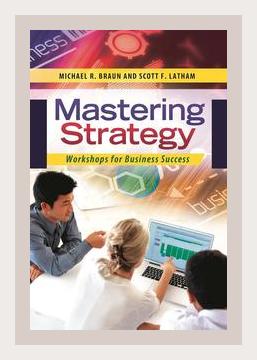Business StrategyStrategic Execution
Summary of “Mastering Strategy: Workshops for Business Success” (1995)
Introduction
“Mastering Strategy: Workshops for Business Success” is a pivotal resource for business leaders and professionals interested in honing their strategic planning and execution capabilities. The book, falling into the strategic execution category, provides a comprehensive guide to developing and implementing effective strategies through a series of practical workshops. It emphasizes actionable steps, interactive exercises, and real-world examples to drive success in business environments.
1. Understanding Strategy
Example & Actionable Step:
– Example: The book opens with an example of a mid-sized manufacturing company that failed to capture market share due to a lack of clear strategy. They eventually succeeded by garnering a focused strategic approach.
– Action: Identify and clearly articulate your organization’s core strategy. Conduct an in-depth SWOT analysis to clarify your strengths, weaknesses, opportunities, and threats.
2. Strategic Vision and Mission Statements
Example & Actionable Step:
– Example: A software startup redefined its mission and vision statement during a workshop session to reflect its evolving market focus, leading to improved team alignment and customer engagement.
– Action: Create or revise your organization’s mission and vision statements through a collaborative workshop. Ensure these statements are concise, inspirational, and aligned with your strategic goals.
3. Analyzing the External Environment
Example & Actionable Step:
– Example: A retail chain improved its strategic positioning by analyzing its competitive environment and identifying gaps they could exploit, such as offering eco-friendly products.
– Action: Conduct a PESTEL (Political, Economic, Social, Technological, Environmental, Legal) analysis to understand the external factors impacting your business. Use this analysis to adjust your strategic initiatives accordingly.
4. Internal Analysis and Core Competencies
Example & Actionable Step:
– Example: An automotive company identified its core competency in innovative engineering through internal analysis, leading to a focus on developing cutting-edge electric vehicles.
– Action: Organize an internal capabilities audit to identify your company’s strengths and weaknesses. Focus on enhancing core competencies and mitigating weaknesses.
5. Strategic Goals and Objectives
Example & Actionable Step:
– Example: A healthcare provider set specific, measurable, achievable, relevant, and time-bound (SMART) goals to increase patient satisfaction and reduce wait times, which significantly improved service delivery.
– Action: Set SMART goals for your organization. Ensure these goals are communicated clearly throughout the organization to foster alignment and drive performance.
6. Strategic Planning Workshops
Example & Actionable Step:
– Example: A global tech firm utilized facilitated workshops to develop cross-functional strategies that integrated diverse departmental insights, resulting in more cohesive and robust strategic plans.
– Action: Facilitate strategic planning workshops that include representatives from various departments. Encourage open dialogue and collaborative brainstorming to create comprehensive strategies.
7. Leadership in Strategy Execution
Example & Actionable Step:
– Example: A telecom company enhanced its strategic execution by developing a leadership training program focused on strategic thinking and execution, leading to better alignment and results.
– Action: Invest in leadership development programs that emphasize strategic thinking and execution. Empower leaders at all levels to take ownership of strategy execution within their teams.
8. Aligning Organizational Structure and Culture
Example & Actionable Step:
– Example: A financial services firm realigned its organizational structure to be more agile and adaptable, supporting its strategic focus on customer-centric innovation.
– Action: Evaluate your organization’s structure and culture to ensure they support your strategic objectives. Implement necessary changes to foster agility and alignment with your strategy.
9. Effective Communication of Strategy
Example & Actionable Step:
– Example: A media company created a strategic communication plan that included regular updates, a dedicated intranet site, and town hall meetings, significantly enhancing strategy awareness and buy-in.
– Action: Develop a comprehensive communication plan to regularly share strategic updates with all employees. Utilize multiple channels to ensure the message reaches everyone.
10. Monitoring and Adjusting Strategy
Example & Actionable Step:
– Example: An insurance company implemented a real-time monitoring system to track the performance of strategic initiatives, allowing for quick adjustments and improved outcomes.
– Action: Establish continuous monitoring mechanisms to track the progress of your strategic initiatives. Be prepared to make adjustments as needed based on performance data.
11. Strategic Innovation and Adaptation
Example & Actionable Step:
– Example: A consumer electronics company fostered a culture of innovation by holding regular think tanks and innovation workshops, leading to the development of breakthrough products.
– Action: Encourage a culture of innovation within your organization. Hold regular workshops and brainstorming sessions to explore new ideas and approaches to your strategic challenges.
Conclusion
“Mastering Strategy: Workshops for Business Success” provides a practical framework for developing and executing business strategies through interactive workshops and actionable steps. From defining strategic vision and mission statements to fostering a culture of innovation, the book offers valuable insights and examples that can guide organizations towards achieving sustainable success.
By applying the principles and techniques outlined in this book, business leaders can enhance their strategic planning and execution capabilities, drive organizational alignment, and achieve their strategic goals effectively.
